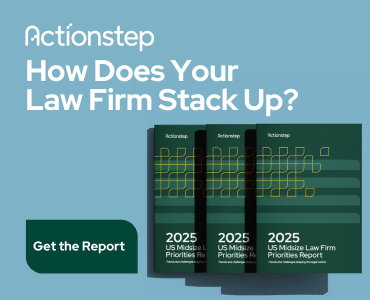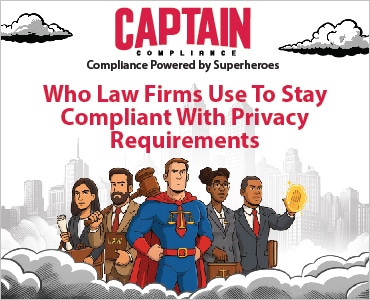The legal hiring market is entering a new era, and your 2026 resume should reflect it. Here are six small but powerful updates to make before the new year begins.
Table of contents
What Hiring Managers Want to See
Between automated screening, performance metrics and an increasingly mobile talent pool, you can no longer rely on the static, duty-based lawyer resume from a decade ago. Today’s hiring managers and recruiters want to see business awareness, leadership agility and evidence, not just a list of cases or committees. If your resume still reads like a bar application, it’s time for a rebrand.
As a longtime legal operations consultant turned career coach, I work with attorneys and firm leaders to modernize their professional profiles. This article draws on hundreds of resume reviews and hiring discussions to highlight how AI screening, portable business metrics and narrative-based branding are redefining what “qualified” looks like heading into 2026.
What’s Changed Since the Pandemic Era
The pandemic cracked open a truth most of us quietly knew: Careers in law aren’t linear anymore. Many attorneys pivoted between firms, in-house roles, contract positions and consulting work. Hybrid schedules blurred the line between local and national practice. And, crucially, hiring shifted from pedigree to performance.
Firms and legal departments now ask:
- How quickly can this person integrate into a remote or hybrid team?
- Can they deliver value with minimal oversight?
- Do they understand the business side of law, not just billable hours?
Lawyer resumes that only show what you did (e.g., “drafted pleadings” or “managed discovery”) don’t answer those questions. The modern resume must illustrate impact: revenue preserved, costs reduced, clients retained, processes streamlined. That’s the language hiring managers now speak.
Why Duty-Driven Lawyer Resumes Are Being Filtered Out
Automated screening systems (ATS) and AI-based recruiters don’t care about prestige; they care about alignment. If your bullet points still begin with “Responsible for” or “Handled,” you’re losing valuable traction.
AI parsing favors results-driven phrasing:
- Reduced motion practice by 30% through an early-case evaluation strategy.
- Led integration of e-billing platform across four offices, eliminating manual workflows, reducing FTE by 3.
- Negotiated settlements averaging 25% below exposure benchmarks.
Each line should be a micro-achievement, short, measurable and tied to a tangible outcome. This shift also levels the playing field between law firms: Attorneys from smaller firms can now demonstrate value that competes directly with AmLaw 100 pedigrees.
What Lawyer Resumes Should Highlight Now
If your resume hasn’t been rewritten since 2020, you’re missing entire categories of credibility. Hiring committees are now prioritizing three qualities:
1. Business Value
Lawyers who understand profitability, client service metrics and cross-department collaboration are in demand. Even if you’re not in management, highlight the business effect of your legal work, such as cost control, client retention, budget adherence or improved workflows.
2. Leadership Agility
Today’s market rewards flexibility. Have you chaired a DEI committee, coordinated hiring, led a hybrid team, or built a process from scratch? That’s leadership. It shows initiative, influence and cultural contribution — traits that firms are actively tracking and seeking.
3. Operational Fluency
Law no longer lives in isolation. Demonstrate how you’ve collaborated with finance, HR, compliance or IT. This signals adaptability, a key predictor of future success.
Each resume section should now function like a mini business case. Your goal: Not just to show what you know, but how you create results.
Balancing AI Readability With Human Storytelling
Lawyers often ask, “If I write for AI, won’t it sound robotic?” The answer: Not if you balance it right. The trick is to layer keywords inside authentic storytelling.
For example:
“Developed internal compliance audit framework (risk management, contract governance, data privacy) that reduced regulatory exposure across three regions.”
You’ve satisfied AI keyword matching (risk management, data privacy), but the sentence still reads naturally to a human. Avoid keyword stuffing; aim for contextual relevance. Think of your resume as a searchable story, not a data dump.
Also, remember formatting matters. Stick to standard fonts, no text boxes, and consistent structure (Role | Firm | Dates | Description). AI tools often misread multi-column layouts or embedded symbols. You can still use subtle visual polish, just don’t let design override function. Consider having a more visually appealing version of your resume for in-person meetings. Keep the online versions easy to skim, scan and read. It’s immediately clear to recruiters when it isn’t.
6 Quick Resume Updates Before January 2026
You don’t need a complete rewrite to stay competitive. Start with these six small but powerful upgrades.
1. Retitle Your Document
Drop “Curriculum Vitae” or “Resume.” Use your name and credentials instead — Jane Q. Lawyer, J.D. It feels modern and search-friendly.
2. Rewrite Your Summary
Open with a one-paragraph snapshot highlighting your practice focus, leadership strengths and business mindset. Avoid tired cliches like “results-oriented professional” and lead with specifics that show how you deliver value.
Skip the photo: It belongs on LinkedIn, not your resume. Including an image can make employers uncomfortable, since appearance can’t legally factor into hiring decisions. Even worse, some AI recruiting systems misread embedded images as malware or spam, excluding your resume before it’s ever seen.
3. Modernize Your Verbs
Replace “assisted,” “supported” and “handled” with action language — “led,” “negotiated,” “delivered,” “built,” “optimized.”
4. Quantify Achievements
Numbers tell the truth. Even approximate metrics help (e.g., “cut review time by 20%”).
5. Sync It With LinkedIn
AI recruiting platforms can cross-check profiles. If your LinkedIn still reads like it did three jobs ago, it’s a credibility gap. Align tone, keywords and headline. LinkedIn and a companion resume that fully align in content are essential.
6. Get Rid of Hotmail, AOL, MSN, ATT and Earthlink Email Addresses
This step is really important! Using these legacy email platforms or addresses can inadvertently age you, as they’re rarely used by professionals under 40 or those working in modern hybrid environments.
Bringing It All Together
Lawyers used to treat resume updates like vision screenings — necessary but rare. That mindset doesn’t work anymore. The combination of AI screening, lateral mobility and skill-based hiring means your professional brand is now a living document.
The best lawyer resumes heading into 2026 share one trait: They demonstrate readiness to move. They also show adaptability, commercial judgment and forward motion, all qualities firms crave in an uncertain market.
2026 is shaping up to be one of the most competitive hiring years in recent memory, and not just for associates. Demonstrating confidence amid national economic uncertainty, lateral moves, hybrid transitions and AI-assisted screening will reward lawyers who’ve modernized how they present their story.
So, before the year wraps, spend a few hours updating your resume, refreshing your LinkedIn profile, and making sure both reflect not just what you’ve done but why it matters. A few smart updates now could open doors long after the New Year’s confetti has been swept away.
Image © iStockPhoto.com.

Sign up for Attorney at Work’s daily practice tips newsletter here and subscribe to our podcast, Attorney at Work Today.
















